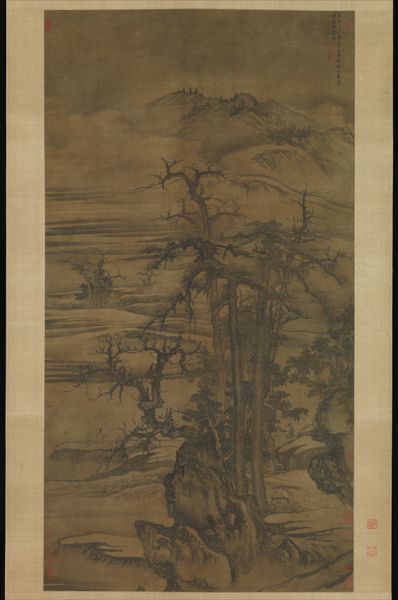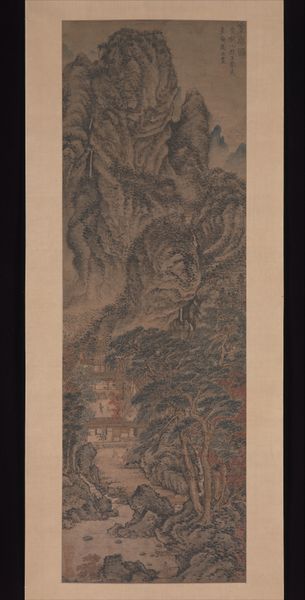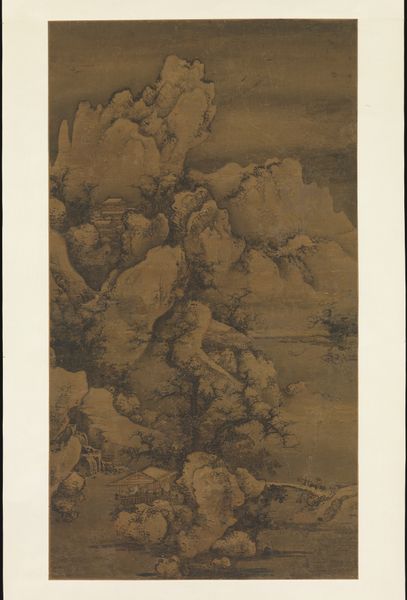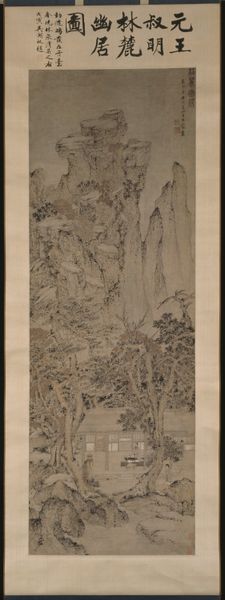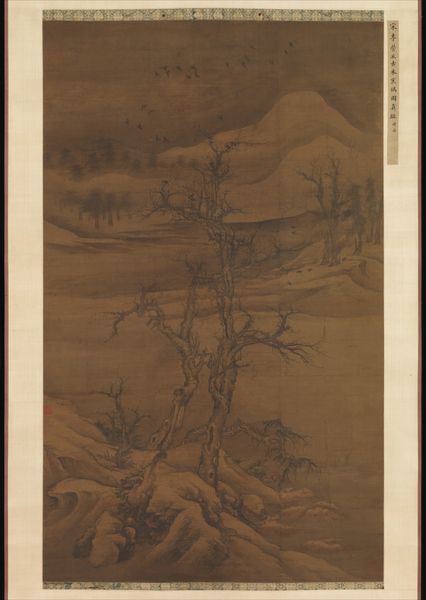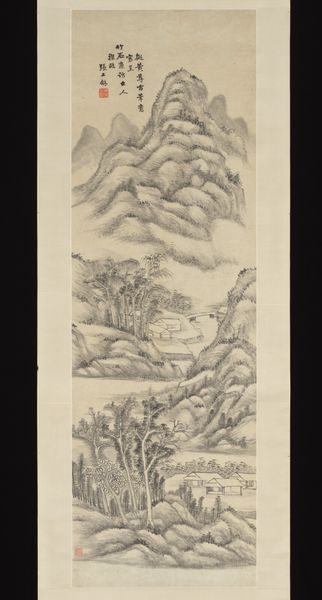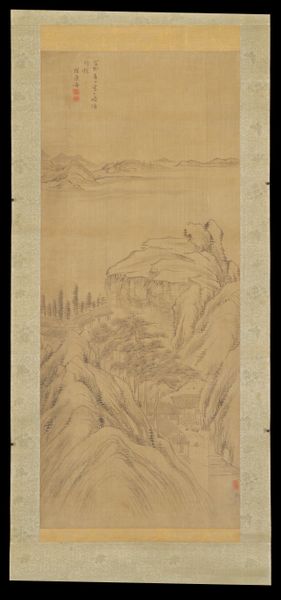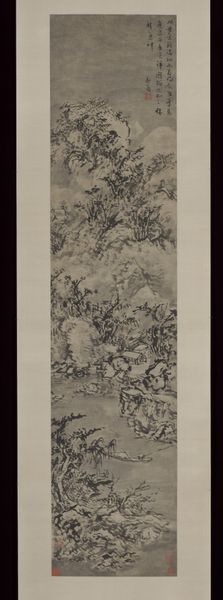
drawing, ink, charcoal
#
portrait
#
tree
#
drawing
#
asian-art
#
landscape
#
charcoal drawing
#
figuration
#
ink
#
charcoal
Dimensions: Image: 69 in. × 40 1/4 in. (175.3 × 102.2 cm) Overall with mounting: 9 ft. 9 in. × 47 3/8 in. (297.2 × 120.3 cm) Overall with knobs: 9 ft. 9 in. × 52 in. (297.2 × 132.1 cm)
Copyright: Public Domain
Editor: We’re looking at "Drunken Recluse Beneath an Old Tree" by Chen Zihe, dating from the early 16th century. It's an ink and charcoal drawing on paper. The recluse appears quite vulnerable under the aged, gnarled tree. What cultural echoes do you hear when you look at this piece? Curator: Indeed. Think about the symbolism embedded in the choice of imagery. The "drunken recluse" is not just a portrayal of intoxication but a representation of an intentional detachment from societal norms, a kind of chosen exile. How does the positioning of the figure *beneath* the old tree amplify this theme, would you say? Editor: It’s almost like the tree is a shelter, but also looming, suggesting both comfort and the weight of nature's indifference? Curator: Precisely! Consider the gnarled, ancient tree. It's a common symbol in Asian art for longevity, wisdom, and a connection to the past. Yet, its twisted form could also represent the challenges and complexities of life from which the recluse is seeking escape. Do you think this escape is complete, or does a sense of tension linger? Editor: I think it’s both. There's a peace, maybe even acceptance, but something about the dark ink hints at a conflict still present. Is the act of retreating an admission of defeat, or an embrace of something else? Curator: A crucial question! Often, the act of withdrawing to nature signifies a desire for purity and enlightenment, a rejection of the corrupting influences of court life. The charcoal and ink contribute to this mood; stark, yet capable of great nuance in rendering textures and emotional states. Consider, too, the cultural memory of earlier recluses, like the Seven Sages of the Bamboo Grove, who turned their backs on society during times of political turmoil. This figure taps into that tradition. Editor: It's like he is both an individual and a vessel for centuries of cultural attitudes. Curator: Exactly. Symbols build on each other, creating layer upon layer of meaning. Seeing art this way, what initially felt like a simple drawing opens up a richer, complex space for cultural dialogue and psychological exploration. Editor: This piece speaks volumes about the ongoing tension between the individual and society. I will not forget the lesson of symbolic layers and cultural memory embedded here.
Comments
No comments
Be the first to comment and join the conversation on the ultimate creative platform.
